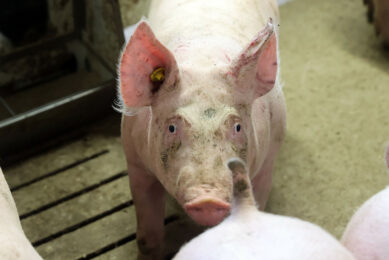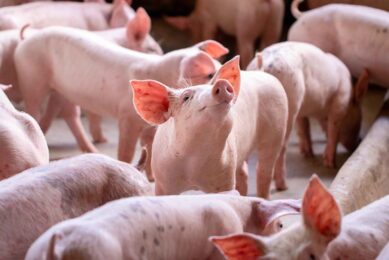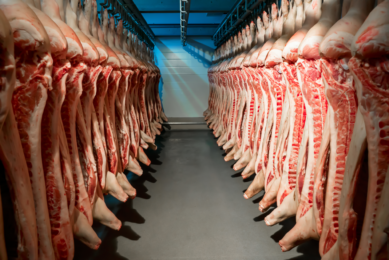K-State scientist studies H1N1 virulence in pigs
Laboratory studies at Kansas State University, USA and the work of a K-State researcher are making headway in the effort to control the novel influenza A virus (H1N1), protecting the pig industry.
Juergen Richt is a Regents Distinguished Professor at K-State’s College of Veterinary Medicine and is a Kansas Bioscience Authority Eminent Scholar. His work at K-State and with outside collaborators is revealing the characteristics of the pandemic H1N1 virus.
Richt is among the K-State researchers who study zoonotic disease – those that can be transmitted from animals to humans and vice versa. Zoonotic diseases will be a focus of the National Agro and Bio-Defense Facility that has been designated for Manhattan.
Strength
“Our strength at K-State is that we are very familiar with zoonotic diseases and we can contribute by working on models for animal and human diseases,” Richt said. “This expertise is very critical now that an agent causing a pandemic flu in humans most likely originated in animal populations.”
At K-State, Richt is leading in vitro research to develop better testing tools, creating a “diagnostic arsenal” if H1N1 were to spread to swine populations. Richt said they are developing diagnostic tools for the direct detection of the virus by finding nucleic acids or other parts of the virus in a sample, as well as tools for indirect detection. The latter approach is done by creating diagnostics that detect antibodies produced by animals infected with the virus.
“We do this work to protect the pig industry in case the virus would jump into the swine population,” Richt said.
Testing virulence
His work with outside collaborators is testing the virulence of pandemic H1N1 in animal models. In pigs, Richt and his fellow researchers found that pandemic H1N1 does infect pigs and transmits between the animals but is not fatal.
“It’s important to know the clinical and pathological effects this virus has on pigs,” Richt said. “It is also important to perform these experiments because we produce reagents in the pigs that we use later for diagnostic purposes as controls to validate our testing systems.”
The researchers also studied the virulence of two strains of the pandemic H1N1 virus in a nonhuman primate model as a way to predict how the strains would affect humans. Comparing an isolate from California with one from Mexico, Richt and his collaborators found that the California isolate was more virulent than the Mexico isolate. Both pandemic H1N1 viruses are more virulent than seasonal H1N1 flu viruses.
“With different isolates, there are different clinical outcomes,” he said.
Animal models
Establishing animal models for pandemic H1N1 is important, Richt said, because physicians have two types of antiviral medications to treat influenza. One type, called adamantine-like drugs, targets the M2 protein; the other type includes drugs like Tamiflu that target the neuraminidase protein. He said that this pandemic H1N1 is already resistant to the M2 inhibitors but still is sensitive to Tamiflu.
“Some pandemic flu isolates from humans have now shown resistance to the Tamiflu,” Richt said. “So the big issue now is if these Tamiflu-resistant strains take over, we have no drug to treat infected patients. And because we don’t have a vaccine yet in the United States, this might be a problem.
“Pandemic H1N1 is another example of how important it is to work on the nexus of human and animal health,” he said.
Related website:
Kansas State University











